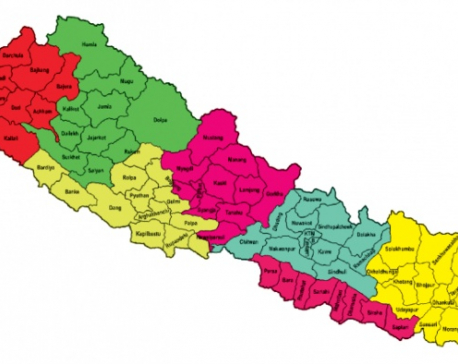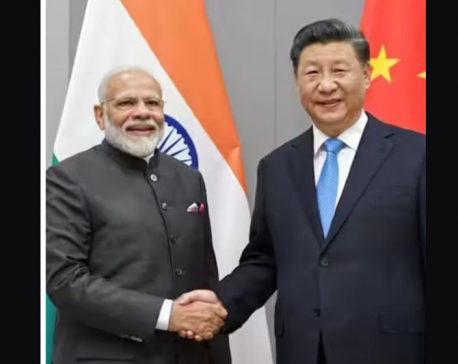
OR
Constitution amendment
It has been more than a year since the new constitution was promulgated by the Constituent Assembly on September 20, 2015. Since, the Madhesh-based parties have been protesting the document, demanding amendments to address some of their aspirations. We saw massive protests and violence in the southern belt and harsh economic blockade by India in an effort to pressure the mainstream parties to amend the constitution. Promises were made, several rounds of negotiations have taken place between the government and the agitating Madheshi forces but amendment has not materialized yet. Sure, amending a constitution to make it acceptable to all sections of the society is a complex, long and difficult task. But the country must not be held hostage to the on-going back and forth among political parties. The major forces should therefore come together and figure out a workable solution to constitution amendment as early as possible.
Reportedly, some of the options are being discussed at the moment on federalism, citizenship and representation in the National Assembly. Parties seem to be nearing a consensus on forming an independent federal commission to sort out disputes surrounding provincial demarcation. We believe this is the workable option for it allows for face saving to all involved. It will also provide ample amount of time for the political parties to reassess their stance and delve into deeper and logical discussions on provincial demarcation. There seems to be a kind of understanding among the political parties to retain citizenship provisions of the Interim Constitution (2007), something the Madheshi forces have been demanding for a long time. This, in our view, could be a workable solution to the long-held misconceptions and rumors on citizenship. The constitution has envisioned the 59-member National Assembly: 56 elected through federal provinces and 3 nominated by the president on the recommendation of the government. Under the current system, each of the seven provinces is to have 5 members and the rest are to be divided according to their population. The proposed negotiation is hinting at 4 members for each of the seven provinces and the rest to be divided as per province population. If the parties come to a consensus on these three contentious issues, it could help break the constitutional logjam in the next few weeks.
There is a constitutional obligation for the political parties to hold three sets of elections—local, provincial and federal—by January 18, 2018. Failing to do so is almost sure to invite the constitutional crisis, which could put key achievements of the past struggles under serious threat. Continued bickering among major political forces over amendment could also invite unnecessary external interference. This is why it is important for the political parties to stop using amendment process as a bargaining tool. Since the political parties, in principle, have agreed on the need for amendment, they should immediately start the homework for the same. Constitution amendment will pave the way for holding elections, which will be the first step towards constitution implementation. While all these seem like a tall order, our political parties have risen to the occasion in the past to narrow down the differences among themselves and come to a meeting point. Nepalis are impatiently waiting for political parties to come together on constitutional issues so that the country can finally embark on a long and difficult road to prosperity.
You May Like This

EC publishes election constituency map (With district wise constituency map)
KATHMANDU, Oct 16: The Election Commission (EC) has published new election area map for upcoming parliamentary and provincial elections. ... Read More...

India protests China's land claim ahead of the G20 summit President Xi Jinping is expected to attend
NEW DELHI, Aug. 31: India is protesting a new Chinese map that lays claim to India’s territory ahead of next... Read More...

PUTTING SMALL BUSINESS ON THE MAP
We turn to internet whenever we need information about names, location, phone numbers from pictures or videos as well as... Read More...





Just In
- Kushal Dixit selected for London Marathon
- Nepal faces Hong Kong today for ACC Emerging Teams Asia Cup
- 286 new industries registered in Nepal in first nine months of current FY, attracting Rs 165 billion investment
- UML's National Convention Representatives Council meeting today
- Gandaki Province CM assigns ministerial portfolios to Hari Bahadur Chuman and Deepak Manange
- 352 climbers obtain permits to ascend Mount Everest this season
- 16 candidates shortlisted for CEO position at Nepal Tourism Board
- WB to take financial management lead for proposed Upper Arun Project






_20220508065243.jpg)







Leave A Comment